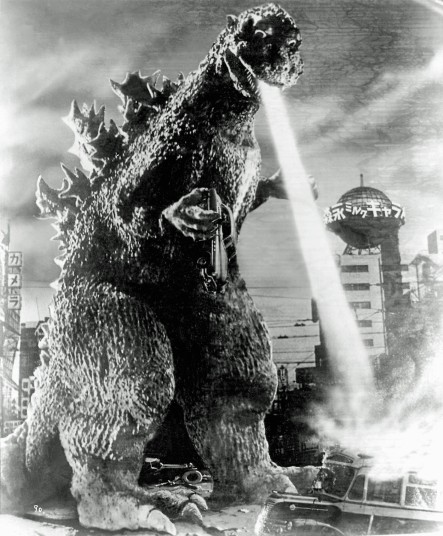
My personal context did have a very direct impact on my interpretation of the original Godzilla film.
Other than the obvious impacts, in that the film was created before I was born and thus the cinematography is dramatically different to what I’m used to. There were a few things that stood out to me that had more to do with information and language.
While I do come from a very Australian background, I have spent a very long time studying and enjoying Asian cultures and its entertainment industry (Japanese culture in particular). So there were a few things in this film that stood out for me and may have been viewed differently.
Firstly, the use of more Kanji characters in signage was important. In more modern films, and in Japan itself- most signs are written in Hiragana and Katakana- since it’s easier for the public to read and understand. It really highlighted the time-period in which this movie was created. A lot of the dialogue was also in stilted and in older format- more formal language than the Japanese you would hear in Anime’s or Japanese drama.
Another thing that impacted my interpretation of the film was my extensive study of the Hiroshima bombing that I did as my major work for my HSC. I’ve always viewed Godzilla as a warning from the Japanese people against nuclear warfare and a visual representation of the devastation that was caused to their country.
The visualization of Godzilla and the fact that he’s depicted as an unapologetic monster could very well show the view of the Japanese people towards America. Since the monster never apologized or rectified his mistakes- and to be honest, neither did America. I think that the evolution of Godzilla through constant remakes will help to enforce the ideal of a nuclear free environment (or at least a safer nuclear practice). But that could just be wishful thinking.
The films itself was not something I would usually watch, I don’t enjoy action films. However, it did make me want to look more into the progression of nuclear power and if there’s any counter measures that have been triggered by this film and the remakes after it.







